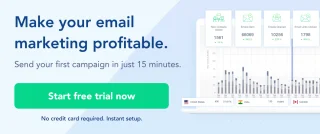Unlike Thomas from Magic Potion trying to sell me horoscope service and shorts to match the horoscope or Beth from the Secret Bank of Swiss asking for my credit card number and my mother’s maiden name, you are sending emails with good intentions, fantastic content and drool-worthy offers.
But they are still landing face-down into your subscriber’s spam box. *thud*ouch*
You not only fail to share your amazing content or offer with your subscribers, but you also lose on revenue. You lose touch with your hot leads and potential customers you spent time & effort on acquiring in the first place.
You hurt your domain reputation further, and if ever your customers find your email in the spam box, they lose trust as they associate your brand with the dark, junky spammy stuff in the spam box.
But it’s 2020 and ‘money is in the list’ fan club is only getting more followers. So before your competition runs over you and catches all your audience, it’s time to change all of that.
Below you will find 5 most common issues (and their solution) with your email marketing that are causing emails to go to spam box. And they work! So take notes. With action items.
Table of Contents
Issues causing a drop in deliverability rates (with solution)
Spammy Subject Lines

Would you ever open this email, although it catches your attention & might be relevant?
I don’t think so.
And spam filters understand that.
They will block any email with a subject line that has manipulative words (creating unnecessary urgency) or make false promises, exaggerated statements, or are too good to be true.
Few examples are: Free gift, great offer, prize, urgent, guaranteed, card accepted, winner, casino, request. This list is not exhaustive, you can find one here.
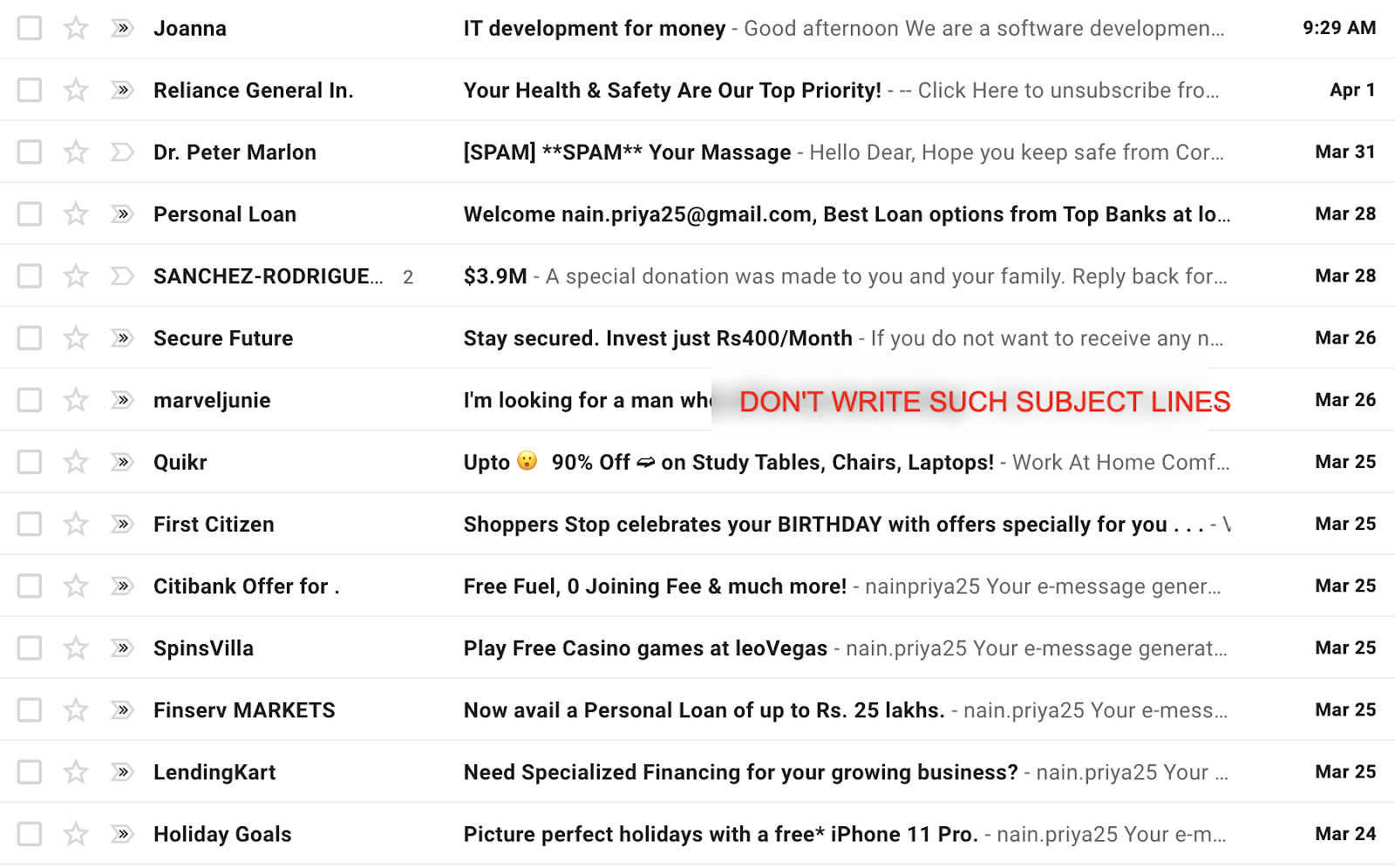
So the first tip is to avoid such words.
Besides, you should follow the following advice too:
- Don't add Re: to subject lines if it's not a reply. It’s an infamous marketing trick but let’s be a little more creative than that.
- Avoid using all caps. IT FEELS LIKE YOU ARE SHOUTING
- Check your spellings
- Don't use exclamation marks in your subject line
Image Only or Image-Heavy Content
Email clients can’t ‘read’ images. They can only parse your text. Hence using image-only emails is a notorious technique used by spammers to hide their text. So when you exhibit the same behavior as a spammer, your emails won’t pass the check of spam filters and hence won’t make it to your reader’s inbox.
Anyone can be tempted to create emails as images to avoid poking in your own eyes while struggling with HTML or CSS. But that’s going to hurt in the long term.
But there is an easier, efficient, and right way to do this - using templates provided by the email marketing software you use.
If you ever wished that you had beautiful templates where you could put your text and don’t have to create heavy images ever again, you are at the right place. Because I am going to suggest you try the ever-expanding library offered by SendX.
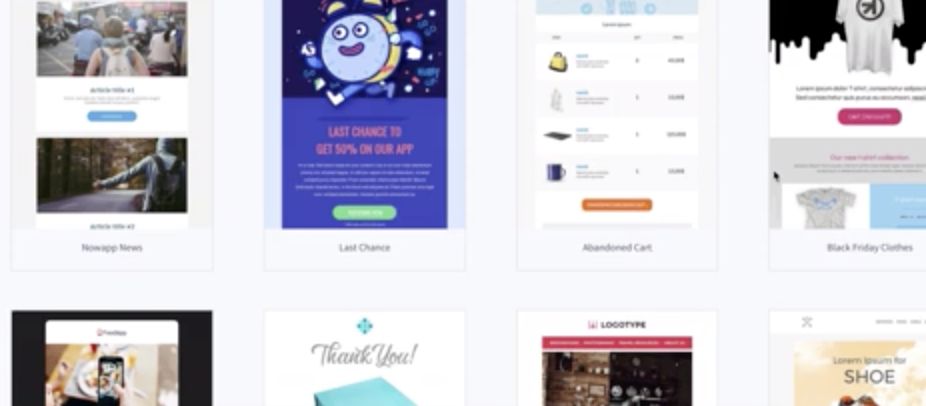
You can check out the whole library, easy to use editor, and get access to 500000+ stock images even when you just try SendX for free for the first 14 days. No credit cards or lists or email requests required.
Poor Engagement Rate
ISPs track when users are opening, deleting, or reading your emails to see the quality of engagement between your list and your emails.
Emails that go unopened or deleted without getting opened will have a negative impact on your sender reputation and, ultimately, your ability to reach the managed inbox. It will signal ISPs that you are sending irrelevant content to your subscribers & they don’t want subscribers to feel overwhelmed with a flooding inbox.
In addition to inactive emails, you might also have a high number of inaccurate email addresses. People mistyped while subscribing or the email address doesn’t exist anymore.
Bigger the list, higher the chances of inactive and inaccurate data.
Let’s see how you can handle both inactive & inaccurate emails.
For the inactive subscribers you can send one last email asking them if they are still interested.
Check how Realmac does it very elegantly:
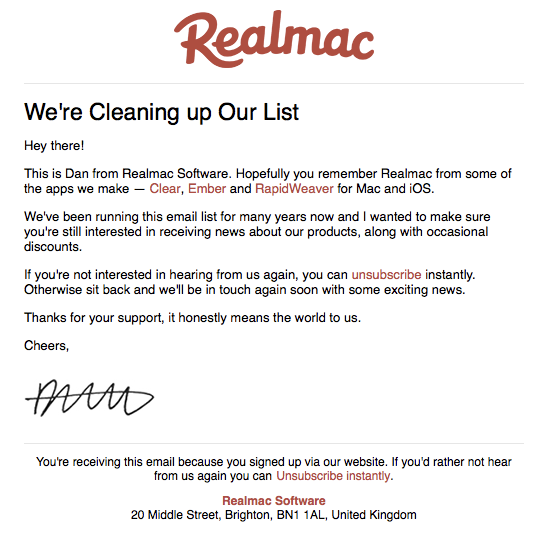
You can identify inaccurate email addresses by checking if any emails were ever delivered to these addresses or not. You can simply archive or delete these.
Difficult to Unsubscribe
It can be painful to see subscribers leave you.
But making it too tricky to opt-out can lead to deliverability problems that will hurt you much more.
If your unsubscribe button is hidden or not present, readers are going to use the ‘Mark as spam’ or ‘Report spam’ button prominently displayed on many email clients.
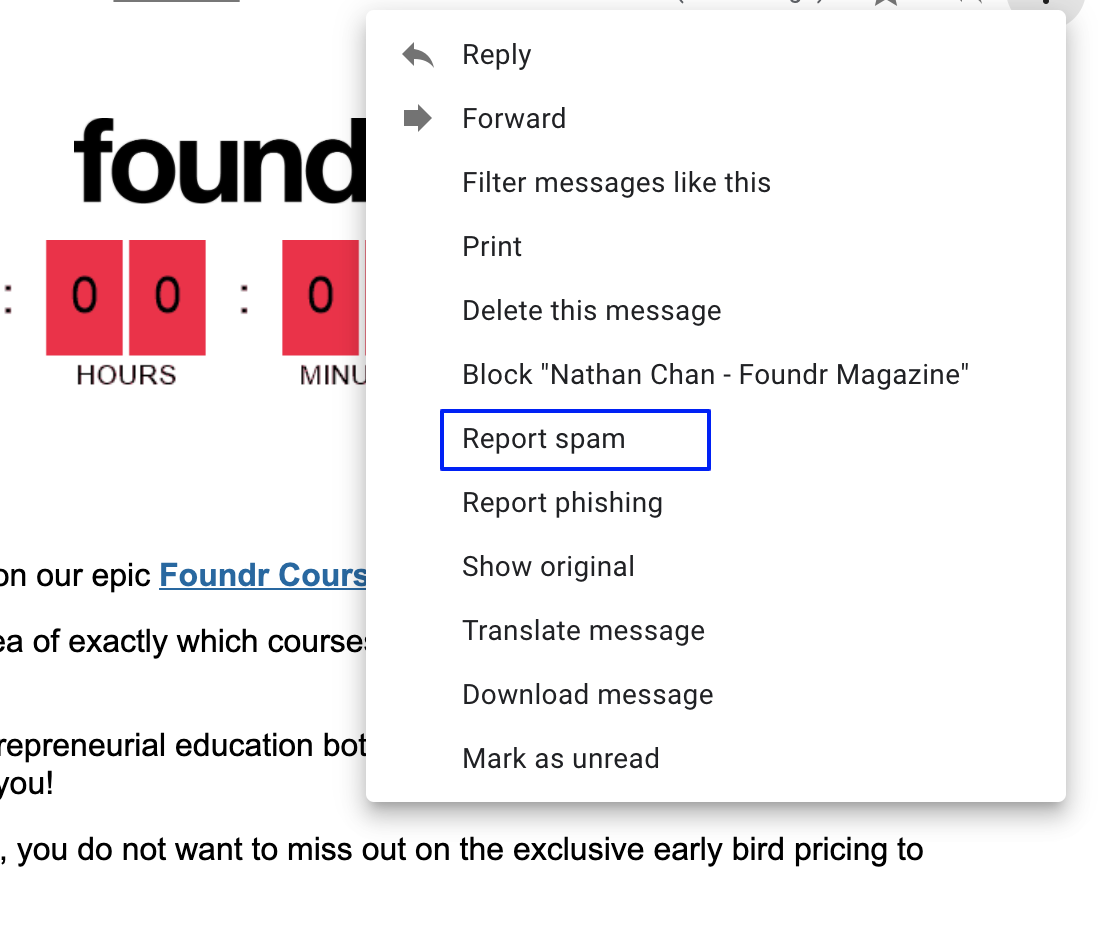
Your email might just have extremely valuable content, or it may contain a great deal but not all your subscribers care. For them, any unwanted email is spam, and if you don’t provide an easy way to unsubscribe, they will go for the next easiest option - ‘Mark as spam.’
The more spam complaints you receive, the lower your sender reputation will be. This will trigger spam filters to block you, and you will be tagged as a spammer.
You can avoid this from happening by making the unsubscribe button easy to find and easy to use.
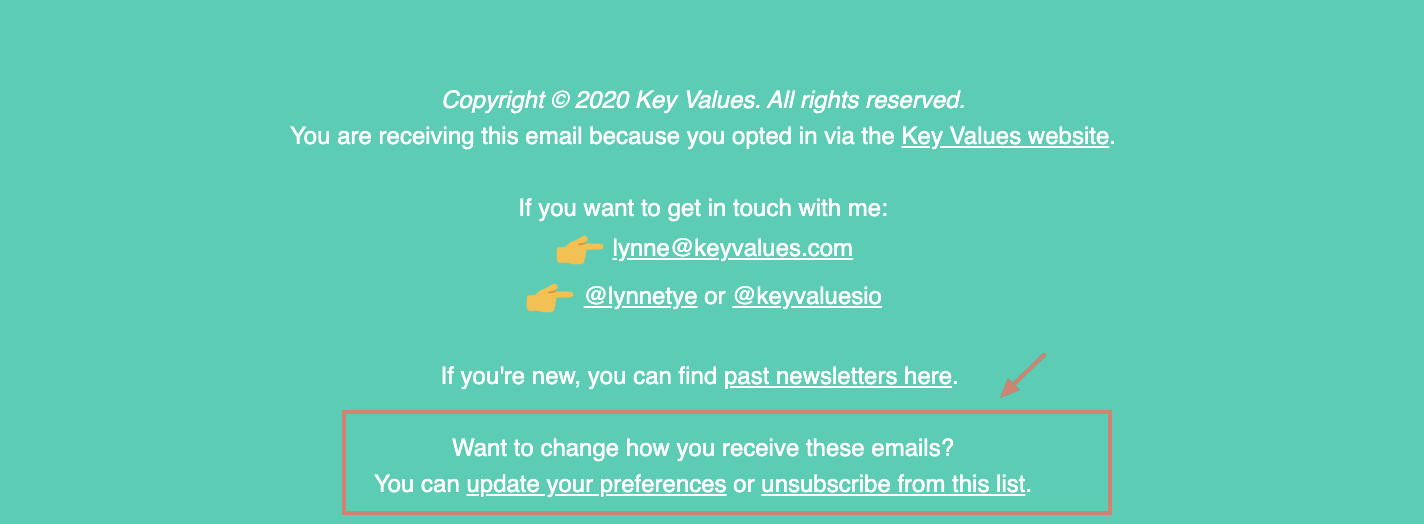
- Put your unsubscribe link in the footer - that’s a standard place where everyone looks for it.
- Don’t hide it in long sentences or images.
- Don’t make anyone log in to their account or reply to you to unsubscribe.
- Setup a one-click unsubscribe in Gmail. To do that, include one or both of these headers in your messages:
List-Unsubscribe-Post: List-Unsubscribe=One-Click
List-Unsubscribe: https://your-company-net/unsubscribe/example* - Very obvious, but often missed - test the unsubscribe link to make sure that it’s not throwing a 404 or 500 error (duh).
Broken Authentication
ISP (Google, Yahoo etc.) or even corporate email servers check SPF or DKIM records to establish the identity of the sender. It is done to prevent subscribers from being victims of phishing or spoofing.
If you are using an email service provider (ESP), they take care of authentication for you. But if you are using your systems or your email server, you have to implement authentication records such as SPF, DNS, and DKIM yourself.
For detailed knowledge about authentication, you can read this guide here.
Bad IP Pool
When you send your campaigns through an ESP, your emails are delivered over their servers. These servers have IP addresses associated with them. ISPs decide whether to deliver the emails you send based on the sending reputation associated with the IPs you use. That means if one person decides to send spam through that ESP, it could affect deliverability for other users as well.

If you are using a shared IP pool from your email service provider ( ESP), then make sure that it’s a reputable ESP. You should ask your ESP about the other users in your sending pool & how the ESP monitors their sending behavior.
If you are looking for an ESP with a high reputation, I recommend you check SendX. Their deliverability team does a great job of keeping only good senders in the system. They continuously monitor blacklists & reasons for any bounce to make sure each IP is performing at its best.
They also maintain multiple shared IP pools based on domain age, historical spam, bounce, unsubscribe & open rates. This tiered shared IP pool ensures that all businesses get deliverability spike owing to consistent email sending volume and similar subscriber engagement patterns.
What’s more?
3000+ companies trust SendX & they offer a free 14-day trial. No credit card required. So you can check it out here and sign up quickly.
Key Takeaway
Email Deliverability issues can’t be solved overnight. But the good news is, these issues are not permanent. Reputation, a clean list, credibility, the craft of writing content, and engagement are things that take time & long term strategy, but can fix your email deliverability issues for sure.
Just keep an eye on your email reports - list health and performance to ensure that you’re sending the right emails to the right audience. And if you see a drop any time, troubleshoot with the points you read above.
If you wish to read further about email deliverability, I would suggest this ultimate guide on deliverability written by email marketers, for email marketers.


